Quick filters:
Median soldiers Stock Photos and Images
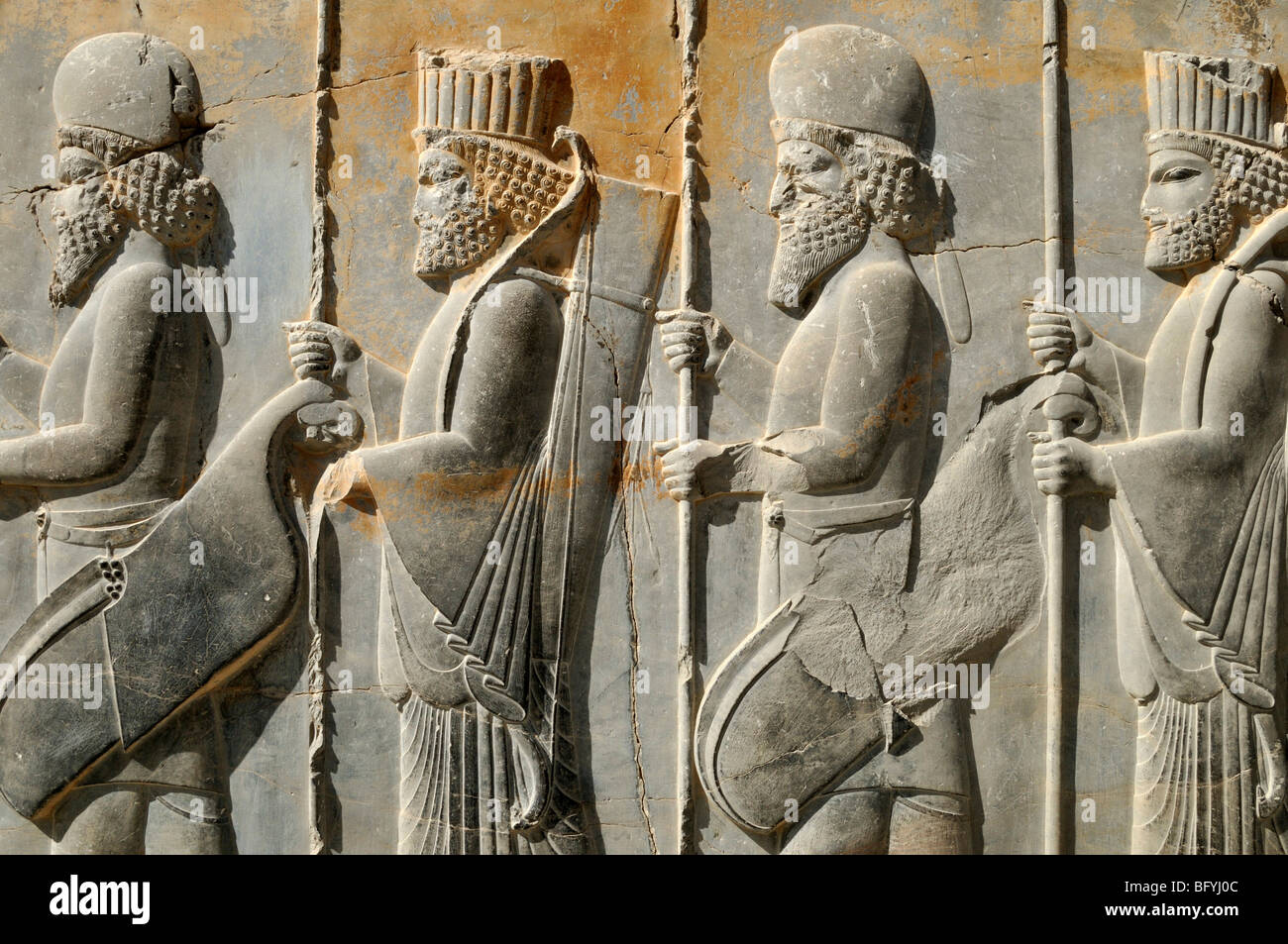 Bas-relief of Persian and Median soldiers at the Achaemenid archaeological site of Persepolis, UNESCO World Heritage Site, Pers Stock Photohttps://www.alamy.com/image-license-details/?v=1https://www.alamy.com/stock-photo-bas-relief-of-persian-and-median-soldiers-at-the-achaemenid-archaeological-27037036.html
Bas-relief of Persian and Median soldiers at the Achaemenid archaeological site of Persepolis, UNESCO World Heritage Site, Pers Stock Photohttps://www.alamy.com/image-license-details/?v=1https://www.alamy.com/stock-photo-bas-relief-of-persian-and-median-soldiers-at-the-achaemenid-archaeological-27037036.htmlRMBFYJ0C–Bas-relief of Persian and Median soldiers at the Achaemenid archaeological site of Persepolis, UNESCO World Heritage Site, Pers
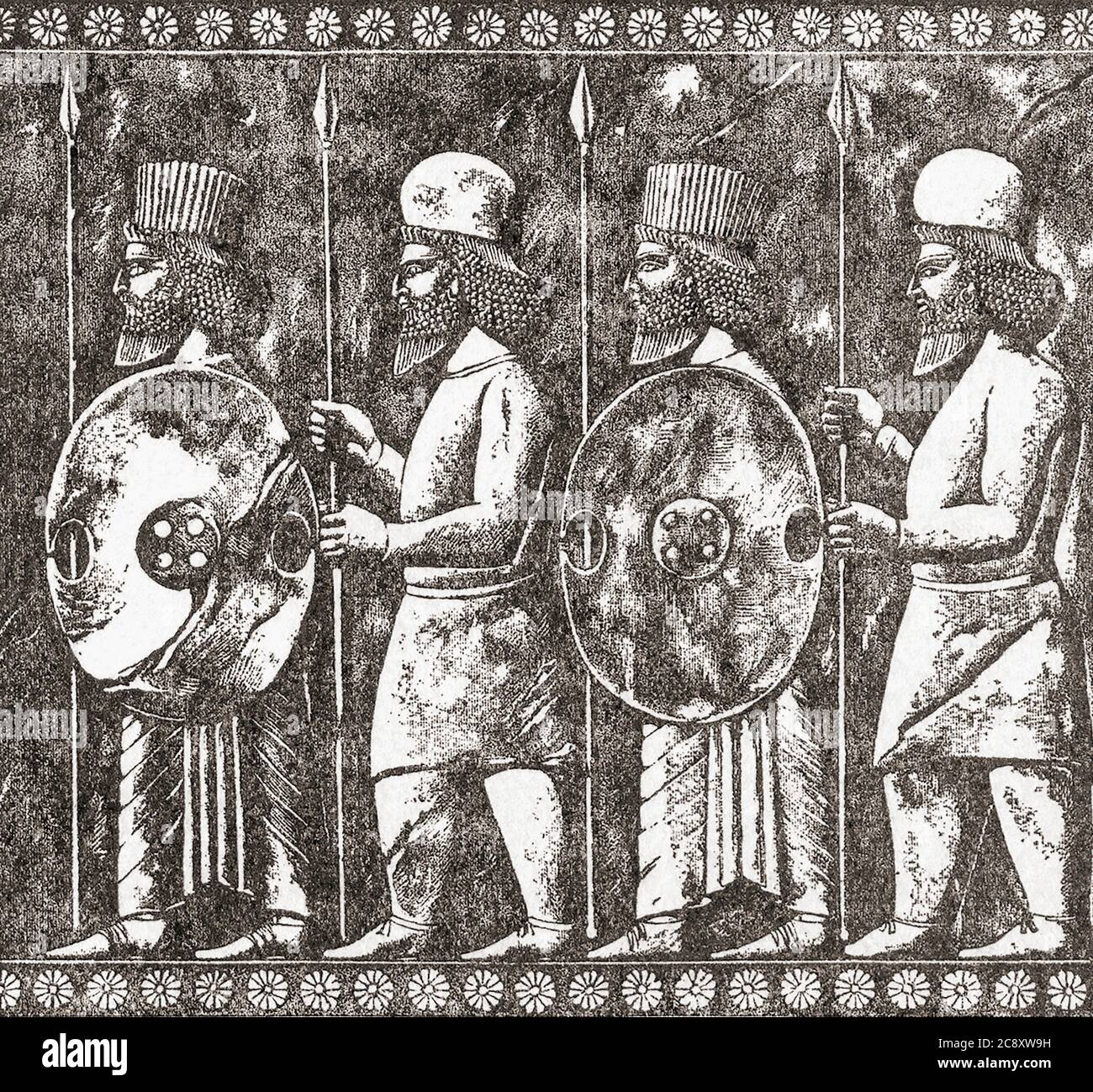 Median and Persian foot-soldiers. The Medes were a Mesoptamian people who after their tribes formed the Median Kingdom became Neo-Assyrian vassals. Through various alliances they subsequently destroyed the Neo-Assyrian Empire and they and their allies became the dominant force in Mesopotamia as the Median Empire. After an illustration by an unidentified 19th century artist. Stock Photohttps://www.alamy.com/image-license-details/?v=1https://www.alamy.com/median-and-persian-foot-soldiers-the-medes-were-a-mesoptamian-people-who-after-their-tribes-formed-the-median-kingdom-became-neo-assyrian-vassals-through-various-alliances-they-subsequently-destroyed-the-neo-assyrian-empire-and-they-and-their-allies-became-the-dominant-force-in-mesopotamia-as-the-median-empire-after-an-illustration-by-an-unidentified-19th-century-artist-image366925597.html
Median and Persian foot-soldiers. The Medes were a Mesoptamian people who after their tribes formed the Median Kingdom became Neo-Assyrian vassals. Through various alliances they subsequently destroyed the Neo-Assyrian Empire and they and their allies became the dominant force in Mesopotamia as the Median Empire. After an illustration by an unidentified 19th century artist. Stock Photohttps://www.alamy.com/image-license-details/?v=1https://www.alamy.com/median-and-persian-foot-soldiers-the-medes-were-a-mesoptamian-people-who-after-their-tribes-formed-the-median-kingdom-became-neo-assyrian-vassals-through-various-alliances-they-subsequently-destroyed-the-neo-assyrian-empire-and-they-and-their-allies-became-the-dominant-force-in-mesopotamia-as-the-median-empire-after-an-illustration-by-an-unidentified-19th-century-artist-image366925597.htmlRM2C8XW9H–Median and Persian foot-soldiers. The Medes were a Mesoptamian people who after their tribes formed the Median Kingdom became Neo-Assyrian vassals. Through various alliances they subsequently destroyed the Neo-Assyrian Empire and they and their allies became the dominant force in Mesopotamia as the Median Empire. After an illustration by an unidentified 19th century artist.
 Bas-relief of Persian and Median soldiers on the Apadana Palace, Achaemenid archeological site of Persepolis Stock Photohttps://www.alamy.com/image-license-details/?v=1https://www.alamy.com/stock-photo-bas-relief-of-persian-and-median-soldiers-on-the-apadana-palace-achaemenid-73547575.html
Bas-relief of Persian and Median soldiers on the Apadana Palace, Achaemenid archeological site of Persepolis Stock Photohttps://www.alamy.com/image-license-details/?v=1https://www.alamy.com/stock-photo-bas-relief-of-persian-and-median-soldiers-on-the-apadana-palace-achaemenid-73547575.htmlRME7JAK3–Bas-relief of Persian and Median soldiers on the Apadana Palace, Achaemenid archeological site of Persepolis
 Relief of Persian and Median soldiers (the Medes are the ones with rounded caps) in Persepolis, capital of the Achaemenid Empire (550–330 BC), Iran. Stock Photohttps://www.alamy.com/image-license-details/?v=1https://www.alamy.com/relief-of-persian-and-median-soldiers-the-medes-are-the-ones-with-rounded-caps-in-persepolis-capital-of-the-achaemenid-empire-550330-bc-iran-image594242478.html
Relief of Persian and Median soldiers (the Medes are the ones with rounded caps) in Persepolis, capital of the Achaemenid Empire (550–330 BC), Iran. Stock Photohttps://www.alamy.com/image-license-details/?v=1https://www.alamy.com/relief-of-persian-and-median-soldiers-the-medes-are-the-ones-with-rounded-caps-in-persepolis-capital-of-the-achaemenid-empire-550330-bc-iran-image594242478.htmlRM2WEP29J–Relief of Persian and Median soldiers (the Medes are the ones with rounded caps) in Persepolis, capital of the Achaemenid Empire (550–330 BC), Iran.
 Median Soldiers bass relief from volume II of Ridpath's Universal history by Ridpath, John Clark, 1840-1900 published in 1897 Stock Photohttps://www.alamy.com/image-license-details/?v=1https://www.alamy.com/median-soldiers-bass-relief-from-volume-ii-of-ridpaths-universal-history-by-ridpath-john-clark-1840-1900-published-in-1897-image619287849.html
Median Soldiers bass relief from volume II of Ridpath's Universal history by Ridpath, John Clark, 1840-1900 published in 1897 Stock Photohttps://www.alamy.com/image-license-details/?v=1https://www.alamy.com/median-soldiers-bass-relief-from-volume-ii-of-ridpaths-universal-history-by-ridpath-john-clark-1840-1900-published-in-1897-image619287849.htmlRM2XYEYY5–Median Soldiers bass relief from volume II of Ridpath's Universal history by Ridpath, John Clark, 1840-1900 published in 1897
 German Soldiers in their Emplacement near Ternopil, 1944 Stock Photohttps://www.alamy.com/image-license-details/?v=1https://www.alamy.com/stock-photo-german-soldiers-in-their-emplacement-near-ternopil-1944-48340651.html
German Soldiers in their Emplacement near Ternopil, 1944 Stock Photohttps://www.alamy.com/image-license-details/?v=1https://www.alamy.com/stock-photo-german-soldiers-in-their-emplacement-near-ternopil-1944-48340651.htmlRMCPJ2YR–German Soldiers in their Emplacement near Ternopil, 1944
 Persian and Median soldiers in bas relief at the Tripylon ('triple gate') of Persepolis. situated between the Apadana and the Hall of Hundred Columns Stock Photohttps://www.alamy.com/image-license-details/?v=1https://www.alamy.com/persian-and-median-soldiers-in-bas-relief-at-the-tripylon-triple-gate-of-persepolis-situated-between-the-apadana-and-the-hall-of-hundred-columns-image342302380.html
Persian and Median soldiers in bas relief at the Tripylon ('triple gate') of Persepolis. situated between the Apadana and the Hall of Hundred Columns Stock Photohttps://www.alamy.com/image-license-details/?v=1https://www.alamy.com/persian-and-median-soldiers-in-bas-relief-at-the-tripylon-triple-gate-of-persepolis-situated-between-the-apadana-and-the-hall-of-hundred-columns-image342302380.htmlRF2ATW650–Persian and Median soldiers in bas relief at the Tripylon ('triple gate') of Persepolis. situated between the Apadana and the Hall of Hundred Columns
 German Soldiers at the Eastern Front, 1941 Stock Photohttps://www.alamy.com/image-license-details/?v=1https://www.alamy.com/stock-photo-german-soldiers-at-the-eastern-front-1941-48381058.html
German Soldiers at the Eastern Front, 1941 Stock Photohttps://www.alamy.com/image-license-details/?v=1https://www.alamy.com/stock-photo-german-soldiers-at-the-eastern-front-1941-48381058.htmlRMCPKXEX–German Soldiers at the Eastern Front, 1941
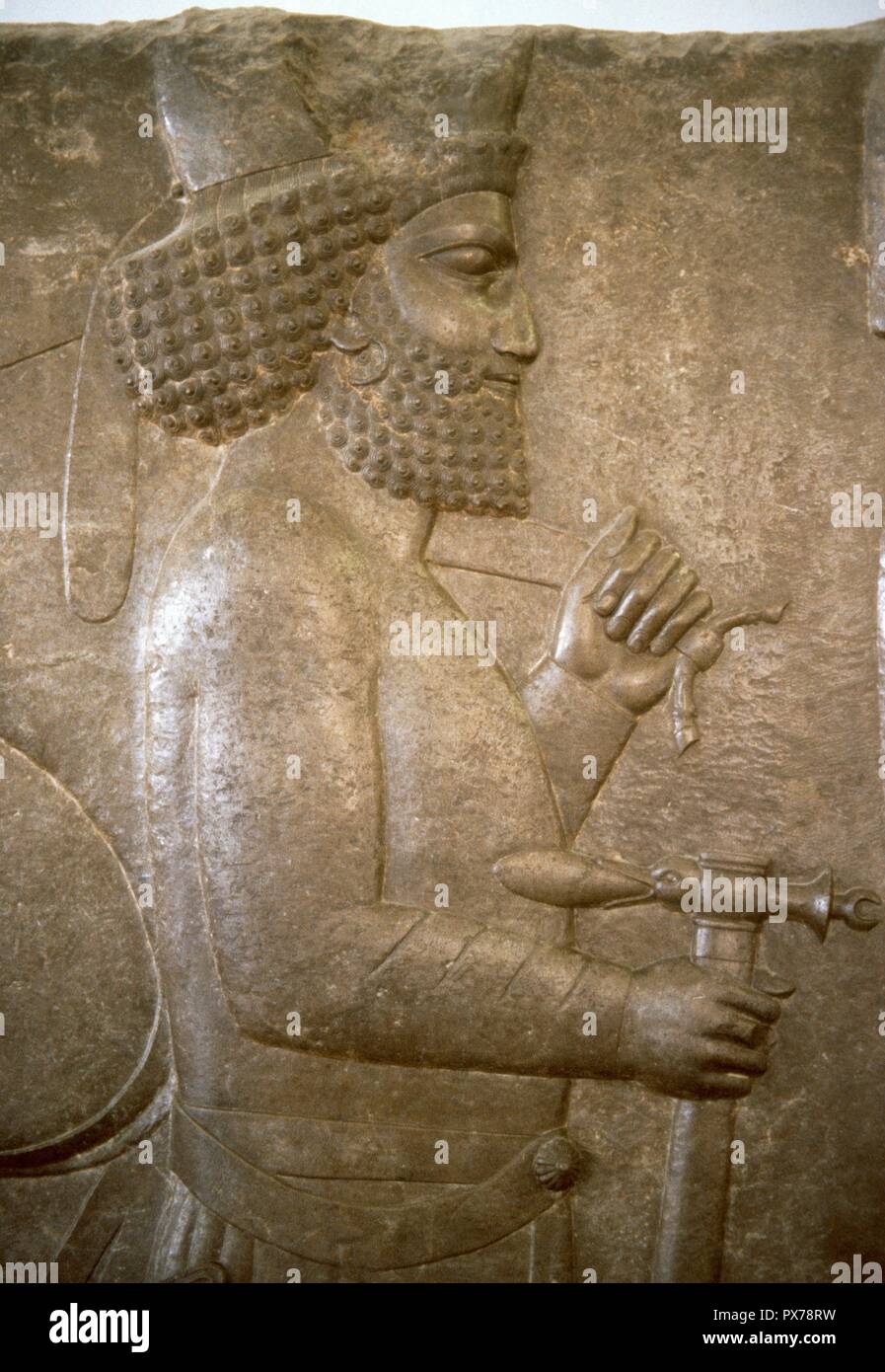 Sculptural relief depicting a Median squire (round cap) during a reception with king Darius I. 5th century BC. From Persepolis (Iran). UNESCO World Heritage Site. National Museum of Iran. Tehran, Islamic Republic of Iran. Stock Photohttps://www.alamy.com/image-license-details/?v=1https://www.alamy.com/sculptural-relief-depicting-a-median-squire-round-cap-during-a-reception-with-king-darius-i-5th-century-bc-from-persepolis-iran-unesco-world-heritage-site-national-museum-of-iran-tehran-islamic-republic-of-iran-image222666077.html
Sculptural relief depicting a Median squire (round cap) during a reception with king Darius I. 5th century BC. From Persepolis (Iran). UNESCO World Heritage Site. National Museum of Iran. Tehran, Islamic Republic of Iran. Stock Photohttps://www.alamy.com/image-license-details/?v=1https://www.alamy.com/sculptural-relief-depicting-a-median-squire-round-cap-during-a-reception-with-king-darius-i-5th-century-bc-from-persepolis-iran-unesco-world-heritage-site-national-museum-of-iran-tehran-islamic-republic-of-iran-image222666077.htmlRMPX78RW–Sculptural relief depicting a Median squire (round cap) during a reception with king Darius I. 5th century BC. From Persepolis (Iran). UNESCO World Heritage Site. National Museum of Iran. Tehran, Islamic Republic of Iran.
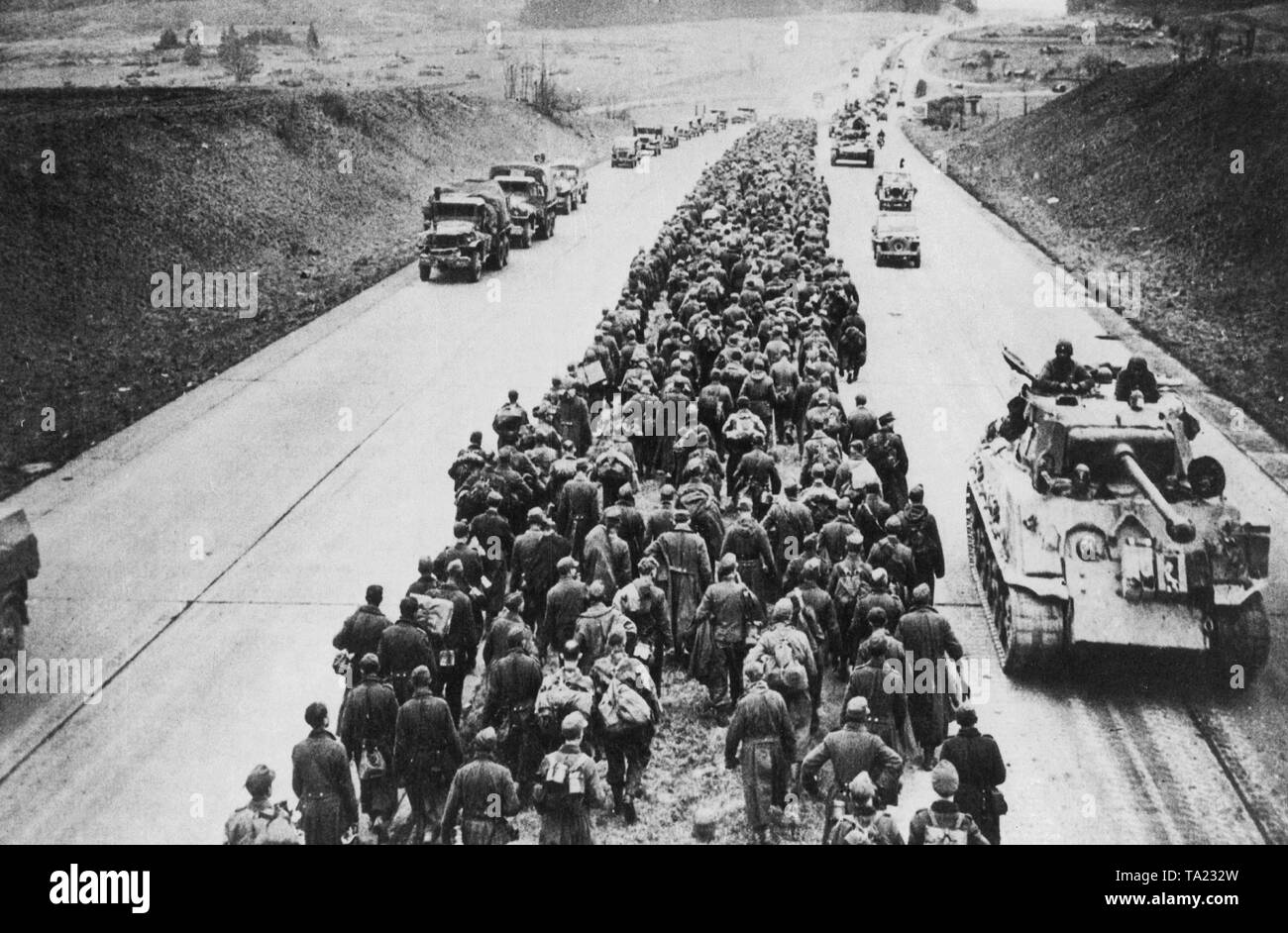 Soldiers of the German Wehrmacht pass advancing American troops in their way into war captivity. The prisoners are marching on the median strip of the motorway near the town of Giessen. Stock Photohttps://www.alamy.com/image-license-details/?v=1https://www.alamy.com/soldiers-of-the-german-wehrmacht-pass-advancing-american-troops-in-their-way-into-war-captivity-the-prisoners-are-marching-on-the-median-strip-of-the-motorway-near-the-town-of-giessen-image247138049.html
Soldiers of the German Wehrmacht pass advancing American troops in their way into war captivity. The prisoners are marching on the median strip of the motorway near the town of Giessen. Stock Photohttps://www.alamy.com/image-license-details/?v=1https://www.alamy.com/soldiers-of-the-german-wehrmacht-pass-advancing-american-troops-in-their-way-into-war-captivity-the-prisoners-are-marching-on-the-median-strip-of-the-motorway-near-the-town-of-giessen-image247138049.htmlRMTA232W–Soldiers of the German Wehrmacht pass advancing American troops in their way into war captivity. The prisoners are marching on the median strip of the motorway near the town of Giessen.
 Northern Alliance troops under General Dostum's command in Mazar-e Sharif take a break on a wall in the median of the town's Stock Photohttps://www.alamy.com/image-license-details/?v=1https://www.alamy.com/stock-photo-northern-alliance-troops-under-general-dostums-command-in-mazar-e-50054027.html
Northern Alliance troops under General Dostum's command in Mazar-e Sharif take a break on a wall in the median of the town's Stock Photohttps://www.alamy.com/image-license-details/?v=1https://www.alamy.com/stock-photo-northern-alliance-troops-under-general-dostums-command-in-mazar-e-50054027.htmlRMCWC4BR–Northern Alliance troops under General Dostum's command in Mazar-e Sharif take a break on a wall in the median of the town's
 Northern Alliance troops under General Dostum's command in Mazar-e Sharif take a break on a wall in the median of the town's busiest street. Stock Photohttps://www.alamy.com/image-license-details/?v=1https://www.alamy.com/northern-alliance-troops-under-general-dostums-command-in-mazar-e-sharif-take-a-break-on-a-wall-in-the-median-of-the-towns-busiest-street-image230058512.html
Northern Alliance troops under General Dostum's command in Mazar-e Sharif take a break on a wall in the median of the town's busiest street. Stock Photohttps://www.alamy.com/image-license-details/?v=1https://www.alamy.com/northern-alliance-troops-under-general-dostums-command-in-mazar-e-sharif-take-a-break-on-a-wall-in-the-median-of-the-towns-busiest-street-image230058512.htmlRMRA81YC–Northern Alliance troops under General Dostum's command in Mazar-e Sharif take a break on a wall in the median of the town's busiest street.
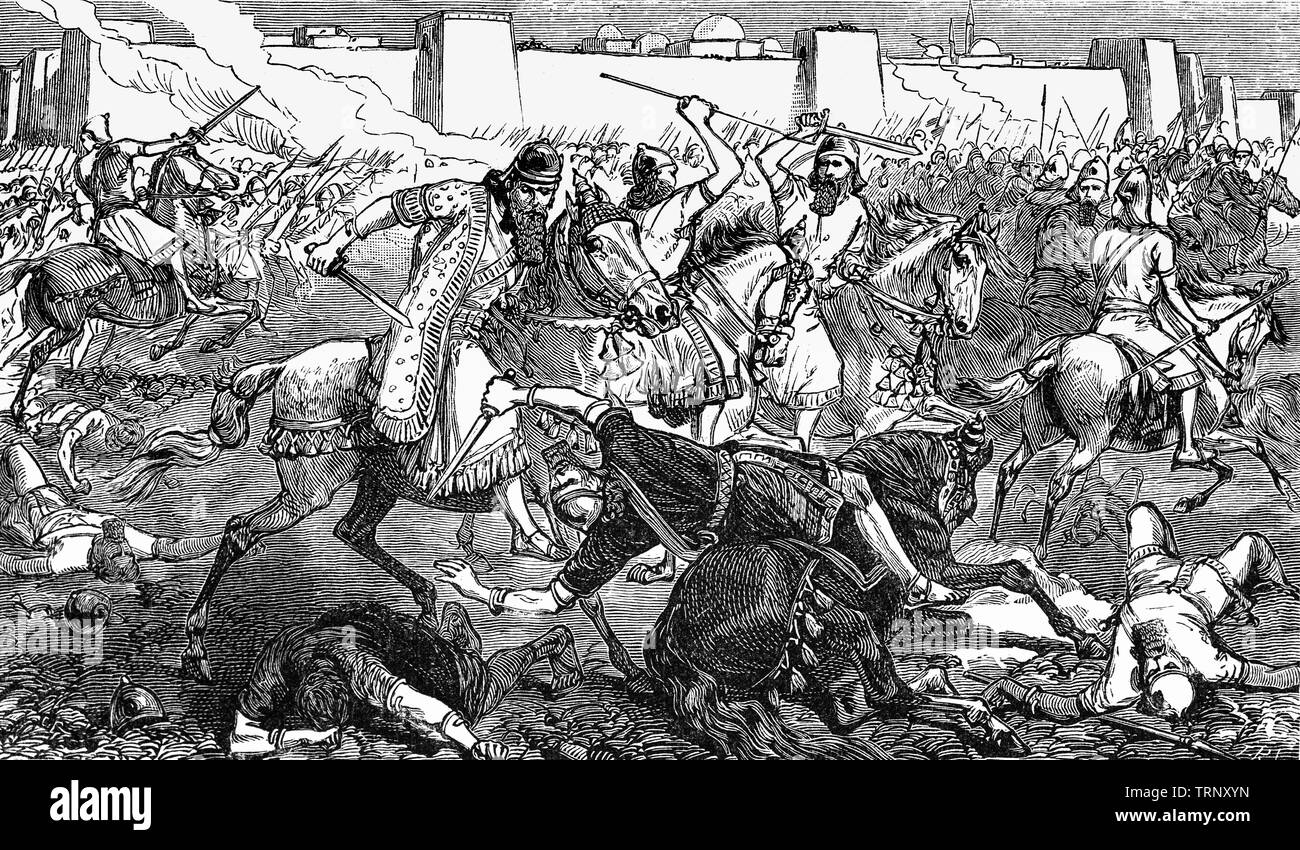 The Battle of Carchemish was fought about 605 BC between the armies of Egypt allied with the remnants of the army of the former Assyrian Empire against the armies of Babylonia, allied with the Medes, Persians, and Scythians. The Egyptians met the full might of the Babylonian and Median army led by Nebuchadnezzar II at Carchemish, where the combined Egyptian and Assyrian forces were destroyed. Assyria ceased to exist as an independent power, and Egypt retreated and was no longer a significant force in the Ancient Near East. Babylonia went on to reach its economic peak after 605 BC. Stock Photohttps://www.alamy.com/image-license-details/?v=1https://www.alamy.com/the-battle-of-carchemish-was-fought-about-605-bc-between-the-armies-of-egypt-allied-with-the-remnants-of-the-army-of-the-former-assyrian-empire-against-the-armies-of-babylonia-allied-with-the-medes-persians-and-scythians-the-egyptians-met-the-full-might-of-the-babylonian-and-median-army-led-by-nebuchadnezzar-ii-at-carchemish-where-the-combined-egyptian-and-assyrian-forces-were-destroyed-assyria-ceased-to-exist-as-an-independent-power-and-egypt-retreated-and-was-no-longer-a-significant-force-in-the-ancient-near-east-babylonia-went-on-to-reach-its-economic-peak-after-605-bc-image255564393.html
The Battle of Carchemish was fought about 605 BC between the armies of Egypt allied with the remnants of the army of the former Assyrian Empire against the armies of Babylonia, allied with the Medes, Persians, and Scythians. The Egyptians met the full might of the Babylonian and Median army led by Nebuchadnezzar II at Carchemish, where the combined Egyptian and Assyrian forces were destroyed. Assyria ceased to exist as an independent power, and Egypt retreated and was no longer a significant force in the Ancient Near East. Babylonia went on to reach its economic peak after 605 BC. Stock Photohttps://www.alamy.com/image-license-details/?v=1https://www.alamy.com/the-battle-of-carchemish-was-fought-about-605-bc-between-the-armies-of-egypt-allied-with-the-remnants-of-the-army-of-the-former-assyrian-empire-against-the-armies-of-babylonia-allied-with-the-medes-persians-and-scythians-the-egyptians-met-the-full-might-of-the-babylonian-and-median-army-led-by-nebuchadnezzar-ii-at-carchemish-where-the-combined-egyptian-and-assyrian-forces-were-destroyed-assyria-ceased-to-exist-as-an-independent-power-and-egypt-retreated-and-was-no-longer-a-significant-force-in-the-ancient-near-east-babylonia-went-on-to-reach-its-economic-peak-after-605-bc-image255564393.htmlRMTRNXYN–The Battle of Carchemish was fought about 605 BC between the armies of Egypt allied with the remnants of the army of the former Assyrian Empire against the armies of Babylonia, allied with the Medes, Persians, and Scythians. The Egyptians met the full might of the Babylonian and Median army led by Nebuchadnezzar II at Carchemish, where the combined Egyptian and Assyrian forces were destroyed. Assyria ceased to exist as an independent power, and Egypt retreated and was no longer a significant force in the Ancient Near East. Babylonia went on to reach its economic peak after 605 BC.
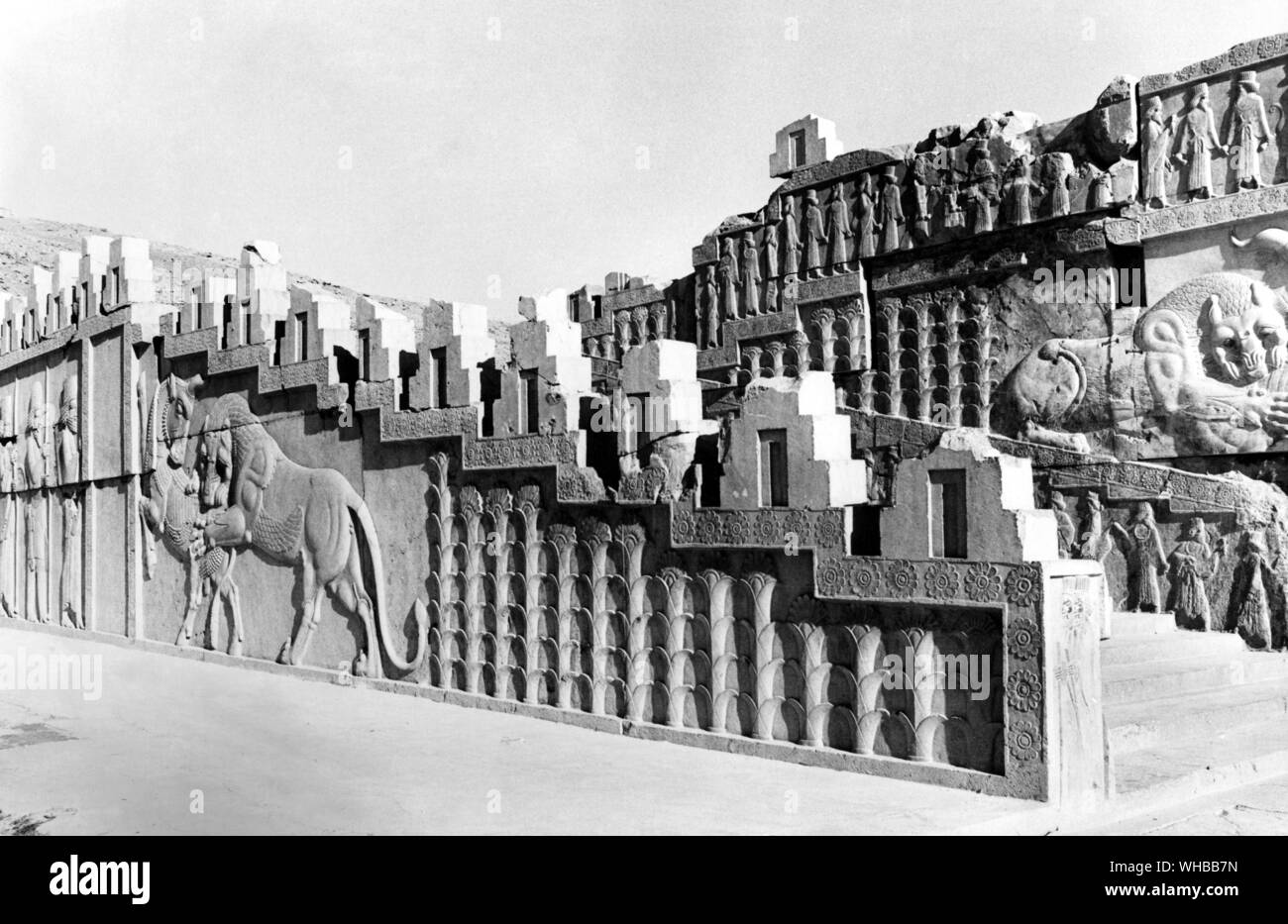 Apadana Palace , Persepolis : Ancient city of Persia , capital of the Persian Empire , founded by Darius . Near to modern Shiraz , Iran . . The Walls were tiled and decorated with pictures of lions , bulls , and flowers Stock Photohttps://www.alamy.com/image-license-details/?v=1https://www.alamy.com/apadana-palace-persepolis-ancient-city-of-persia-capital-of-the-persian-empire-founded-by-darius-near-to-modern-shiraz-iran-the-walls-were-tiled-and-decorated-with-pictures-of-lions-bulls-and-flowers-image268854985.html
Apadana Palace , Persepolis : Ancient city of Persia , capital of the Persian Empire , founded by Darius . Near to modern Shiraz , Iran . . The Walls were tiled and decorated with pictures of lions , bulls , and flowers Stock Photohttps://www.alamy.com/image-license-details/?v=1https://www.alamy.com/apadana-palace-persepolis-ancient-city-of-persia-capital-of-the-persian-empire-founded-by-darius-near-to-modern-shiraz-iran-the-walls-were-tiled-and-decorated-with-pictures-of-lions-bulls-and-flowers-image268854985.htmlRMWHBB7N–Apadana Palace , Persepolis : Ancient city of Persia , capital of the Persian Empire , founded by Darius . Near to modern Shiraz , Iran . . The Walls were tiled and decorated with pictures of lions , bulls , and flowers
 Northern Alliance troops under General Dostum's command in Mazar-e Sharif take a break on a wall in the median of the town's busiest street. The Taliban were driven from Mazir-e Sharif on Nov. 10 2001 by these troops., Photo by:Everett Collection(BSLOC 2011 6 206) Stock Photohttps://www.alamy.com/image-license-details/?v=1https://www.alamy.com/stock-photo-northern-alliance-troops-under-general-dostums-command-in-mazar-e-38134633.html
Northern Alliance troops under General Dostum's command in Mazar-e Sharif take a break on a wall in the median of the town's busiest street. The Taliban were driven from Mazir-e Sharif on Nov. 10 2001 by these troops., Photo by:Everett Collection(BSLOC 2011 6 206) Stock Photohttps://www.alamy.com/image-license-details/?v=1https://www.alamy.com/stock-photo-northern-alliance-troops-under-general-dostums-command-in-mazar-e-38134633.htmlRMC61535–Northern Alliance troops under General Dostum's command in Mazar-e Sharif take a break on a wall in the median of the town's busiest street. The Taliban were driven from Mazir-e Sharif on Nov. 10 2001 by these troops., Photo by:Everett Collection(BSLOC 2011 6 206)
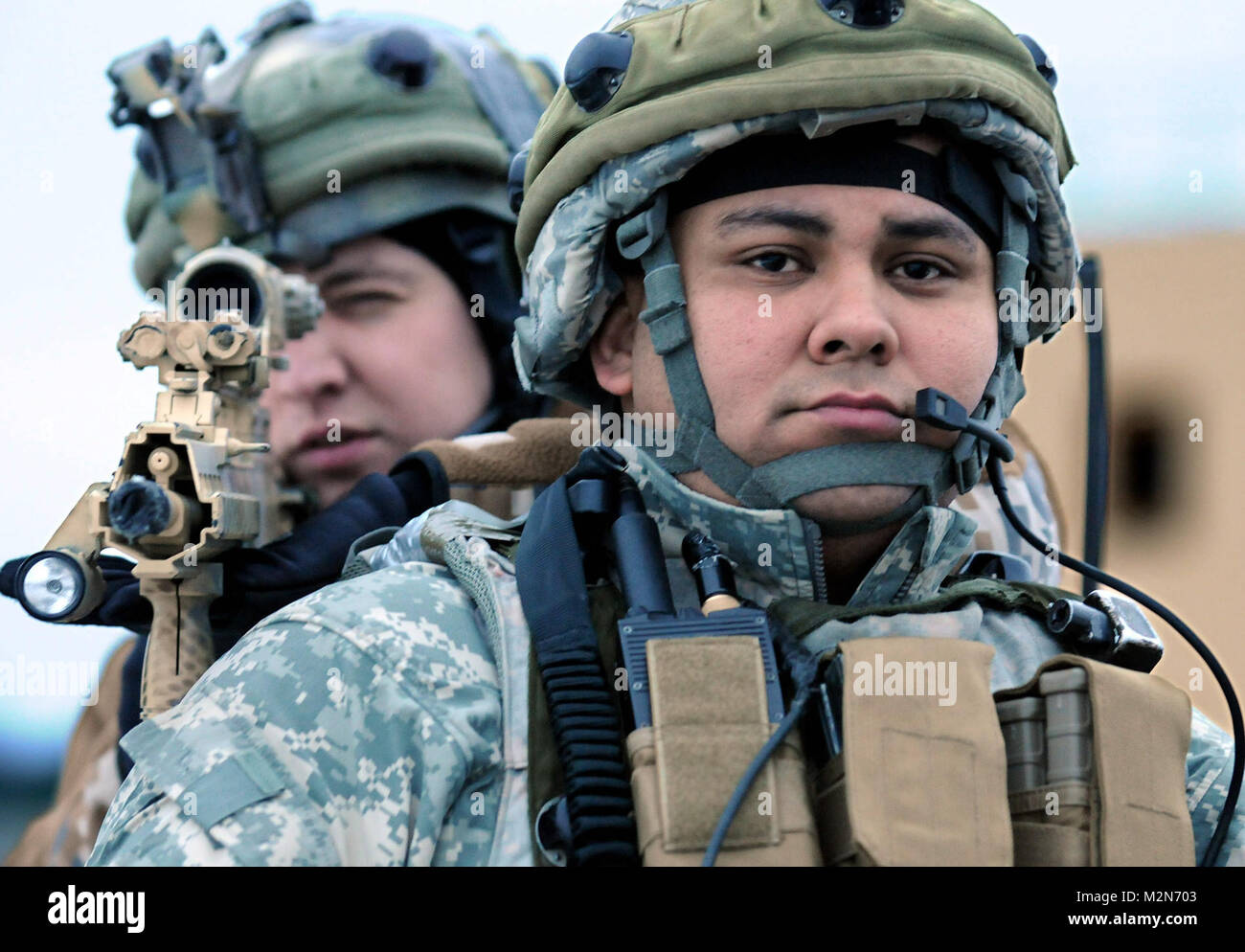 Hohenfels, Germany -- Michigan National guardsman Staff Sgt. Jesus Median provides a shoulder for a Latvian soldier during a simulated combat exercise at the Joint Multinational Readiness Center here. Michigan National guardsmen and the Latvian Army are part of an Observer Mentor Liaison Team who will deploy to Afghanistan to coach, teach and mentor an Afghan National Army unit. (Army photo by SFC Tyrone Walker) Michigan National guard trains with Latvian soldiers in Germany by EUCOM Stock Photohttps://www.alamy.com/image-license-details/?v=1https://www.alamy.com/stock-photo-hohenfels-germany-michigan-national-guardsman-staff-sgt-jesus-median-173799475.html
Hohenfels, Germany -- Michigan National guardsman Staff Sgt. Jesus Median provides a shoulder for a Latvian soldier during a simulated combat exercise at the Joint Multinational Readiness Center here. Michigan National guardsmen and the Latvian Army are part of an Observer Mentor Liaison Team who will deploy to Afghanistan to coach, teach and mentor an Afghan National Army unit. (Army photo by SFC Tyrone Walker) Michigan National guard trains with Latvian soldiers in Germany by EUCOM Stock Photohttps://www.alamy.com/image-license-details/?v=1https://www.alamy.com/stock-photo-hohenfels-germany-michigan-national-guardsman-staff-sgt-jesus-median-173799475.htmlRMM2N703–Hohenfels, Germany -- Michigan National guardsman Staff Sgt. Jesus Median provides a shoulder for a Latvian soldier during a simulated combat exercise at the Joint Multinational Readiness Center here. Michigan National guardsmen and the Latvian Army are part of an Observer Mentor Liaison Team who will deploy to Afghanistan to coach, teach and mentor an Afghan National Army unit. (Army photo by SFC Tyrone Walker) Michigan National guard trains with Latvian soldiers in Germany by EUCOM
 British medical journal . Fig. .—Ijimnatis nilotica, side view. Oral suclier. sliowins charac-teristic, median, dorsal slit and tliree teeth ; ventral view. iFromSavigny.) warning is given against drinking water from the rivers orwells or pools for fear of swallowing leeches. The OldTestauieut.Jew knew then nearly as much as we know nowabout these leeches. They were the cause of endless troubleto Napoleons soldiers in his Egyptian campaign. I cannot recall that Napoleon talked much about spread-ing culture, but he certainly did it. He took ou his incur-sion into Egypt a score of the ablest me Stock Photohttps://www.alamy.com/image-license-details/?v=1https://www.alamy.com/british-medical-journal-fig-ijimnatis-nilotica-side-view-oral-suclier-sliowins-charac-teristic-median-dorsal-slit-and-tliree-teeth-ventral-view-ifromsavigny-warning-is-given-against-drinking-water-from-the-rivers-orwells-or-pools-for-fear-of-swallowing-leeches-the-oldtestauieutjew-knew-then-nearly-as-much-as-we-know-nowabout-these-leeches-they-were-the-cause-of-endless-troubleto-napoleons-soldiers-in-his-egyptian-campaign-i-cannot-recall-that-napoleon-talked-much-about-spread-ing-culture-but-he-certainly-did-it-he-took-ou-his-incur-sion-into-egypt-a-score-of-the-ablest-me-image339963737.html
British medical journal . Fig. .—Ijimnatis nilotica, side view. Oral suclier. sliowins charac-teristic, median, dorsal slit and tliree teeth ; ventral view. iFromSavigny.) warning is given against drinking water from the rivers orwells or pools for fear of swallowing leeches. The OldTestauieut.Jew knew then nearly as much as we know nowabout these leeches. They were the cause of endless troubleto Napoleons soldiers in his Egyptian campaign. I cannot recall that Napoleon talked much about spread-ing culture, but he certainly did it. He took ou his incur-sion into Egypt a score of the ablest me Stock Photohttps://www.alamy.com/image-license-details/?v=1https://www.alamy.com/british-medical-journal-fig-ijimnatis-nilotica-side-view-oral-suclier-sliowins-charac-teristic-median-dorsal-slit-and-tliree-teeth-ventral-view-ifromsavigny-warning-is-given-against-drinking-water-from-the-rivers-orwells-or-pools-for-fear-of-swallowing-leeches-the-oldtestauieutjew-knew-then-nearly-as-much-as-we-know-nowabout-these-leeches-they-were-the-cause-of-endless-troubleto-napoleons-soldiers-in-his-egyptian-campaign-i-cannot-recall-that-napoleon-talked-much-about-spread-ing-culture-but-he-certainly-did-it-he-took-ou-his-incur-sion-into-egypt-a-score-of-the-ablest-me-image339963737.htmlRM2AN2K61–British medical journal . Fig. .—Ijimnatis nilotica, side view. Oral suclier. sliowins charac-teristic, median, dorsal slit and tliree teeth ; ventral view. iFromSavigny.) warning is given against drinking water from the rivers orwells or pools for fear of swallowing leeches. The OldTestauieut.Jew knew then nearly as much as we know nowabout these leeches. They were the cause of endless troubleto Napoleons soldiers in his Egyptian campaign. I cannot recall that Napoleon talked much about spread-ing culture, but he certainly did it. He took ou his incur-sion into Egypt a score of the ablest me
 Alabama National Guard Soldiers from the 128th Military Police Company push a stuck motorist out a median Birmingham, Alabama, Jan. 7, 2017. (Photo by Army Sgt. William Frye.) Stock Photohttps://www.alamy.com/image-license-details/?v=1https://www.alamy.com/alabama-national-guard-soldiers-from-the-128th-military-police-company-push-a-stuck-motorist-out-a-median-birmingham-alabama-jan-7-2017-photo-by-army-sgt-william-frye-image187329054.html
Alabama National Guard Soldiers from the 128th Military Police Company push a stuck motorist out a median Birmingham, Alabama, Jan. 7, 2017. (Photo by Army Sgt. William Frye.) Stock Photohttps://www.alamy.com/image-license-details/?v=1https://www.alamy.com/alabama-national-guard-soldiers-from-the-128th-military-police-company-push-a-stuck-motorist-out-a-median-birmingham-alabama-jan-7-2017-photo-by-army-sgt-william-frye-image187329054.htmlRMMTNG3A–Alabama National Guard Soldiers from the 128th Military Police Company push a stuck motorist out a median Birmingham, Alabama, Jan. 7, 2017. (Photo by Army Sgt. William Frye.)
 Bas-relief at Persepolis Stock Photohttps://www.alamy.com/image-license-details/?v=1https://www.alamy.com/bas-relief-at-persepolis-image221447526.html
Bas-relief at Persepolis Stock Photohttps://www.alamy.com/image-license-details/?v=1https://www.alamy.com/bas-relief-at-persepolis-image221447526.htmlRFPT7PG6–Bas-relief at Persepolis
 A cartoon picture of Army pineal holding machine gun Stock Vectorhttps://www.alamy.com/image-license-details/?v=1https://www.alamy.com/a-cartoon-picture-of-army-pineal-holding-machine-gun-image357361617.html
A cartoon picture of Army pineal holding machine gun Stock Vectorhttps://www.alamy.com/image-license-details/?v=1https://www.alamy.com/a-cartoon-picture-of-army-pineal-holding-machine-gun-image357361617.htmlRF2BNB6AW–A cartoon picture of Army pineal holding machine gun
 Alabama National Guard Soldiers from the 128th Military Police Company push a stuck motorist out a median Birmingham, Alabama, Jan. 7, 2017. ( Stock Photohttps://www.alamy.com/image-license-details/?v=1https://www.alamy.com/alabama-national-guard-soldiers-from-the-128th-military-police-company-push-a-stuck-motorist-out-a-median-birmingham-alabama-jan-7-2017-image230724906.html
Alabama National Guard Soldiers from the 128th Military Police Company push a stuck motorist out a median Birmingham, Alabama, Jan. 7, 2017. ( Stock Photohttps://www.alamy.com/image-license-details/?v=1https://www.alamy.com/alabama-national-guard-soldiers-from-the-128th-military-police-company-push-a-stuck-motorist-out-a-median-birmingham-alabama-jan-7-2017-image230724906.htmlRMRBABY6–Alabama National Guard Soldiers from the 128th Military Police Company push a stuck motorist out a median Birmingham, Alabama, Jan. 7, 2017. (
 Relief of Persian and Median soldiers (the Medes are the ones with rounded caps) in Persepolis, capital of the Achaemenid Empire (550–330 BC), Iran. Stock Photohttps://www.alamy.com/image-license-details/?v=1https://www.alamy.com/relief-of-persian-and-median-soldiers-the-medes-are-the-ones-with-rounded-caps-in-persepolis-capital-of-the-achaemenid-empire-550330-bc-iran-image594242541.html
Relief of Persian and Median soldiers (the Medes are the ones with rounded caps) in Persepolis, capital of the Achaemenid Empire (550–330 BC), Iran. Stock Photohttps://www.alamy.com/image-license-details/?v=1https://www.alamy.com/relief-of-persian-and-median-soldiers-the-medes-are-the-ones-with-rounded-caps-in-persepolis-capital-of-the-achaemenid-empire-550330-bc-iran-image594242541.htmlRM2WEP2BW–Relief of Persian and Median soldiers (the Medes are the ones with rounded caps) in Persepolis, capital of the Achaemenid Empire (550–330 BC), Iran.
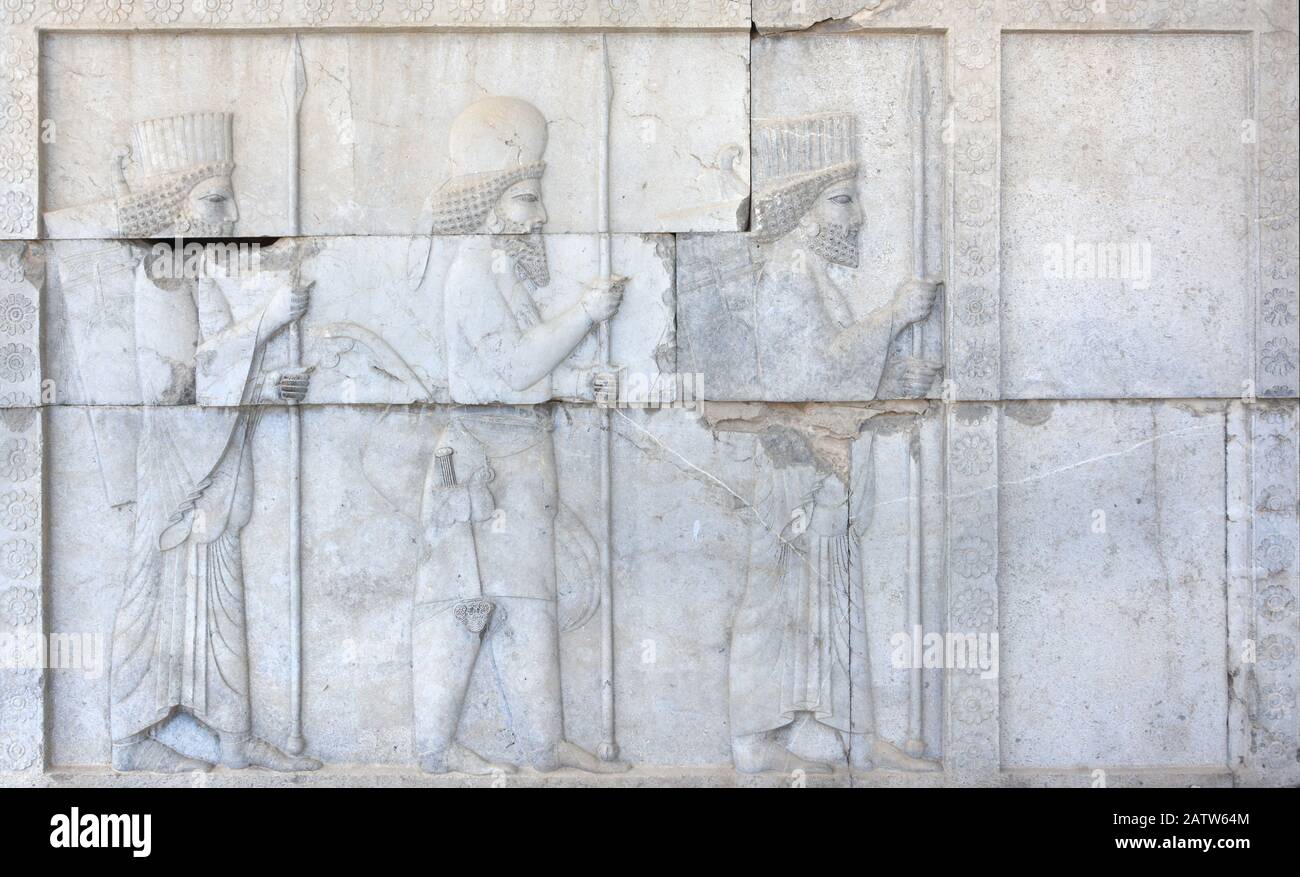 Persian (left and right) and Median (center) soldiers, bas-relief, Apadana Hall, Persepolis, Iran Stock Photohttps://www.alamy.com/image-license-details/?v=1https://www.alamy.com/persian-left-and-right-and-median-center-soldiers-bas-relief-apadana-hall-persepolis-iran-image342302372.html
Persian (left and right) and Median (center) soldiers, bas-relief, Apadana Hall, Persepolis, Iran Stock Photohttps://www.alamy.com/image-license-details/?v=1https://www.alamy.com/persian-left-and-right-and-median-center-soldiers-bas-relief-apadana-hall-persepolis-iran-image342302372.htmlRF2ATW64M–Persian (left and right) and Median (center) soldiers, bas-relief, Apadana Hall, Persepolis, Iran
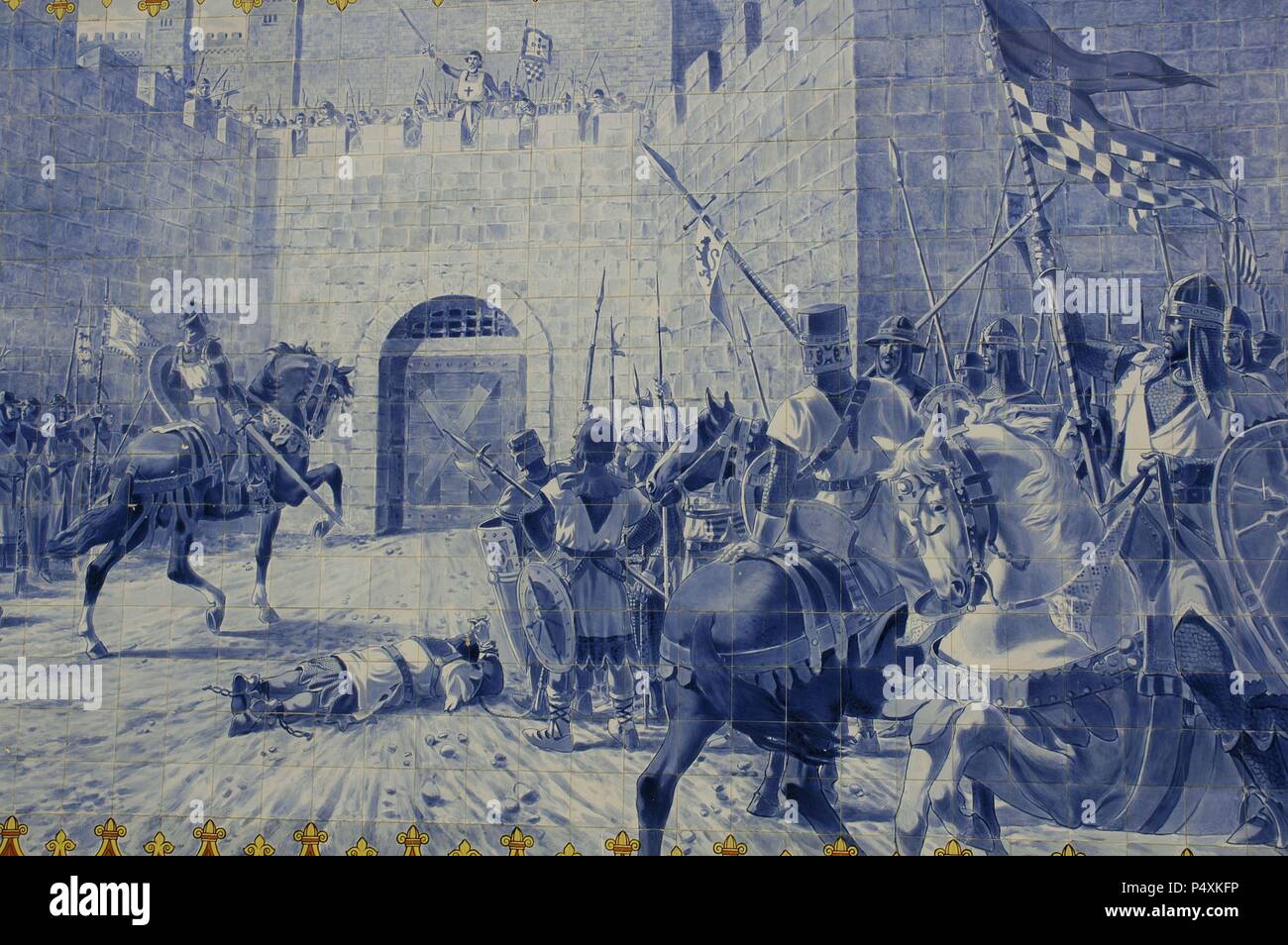 History of Portugal. Middle Ages. The siege of the castle of Torres Novas. Portugal. Stock Photohttps://www.alamy.com/image-license-details/?v=1https://www.alamy.com/history-of-portugal-middle-ages-the-siege-of-the-castle-of-torres-novas-portugal-image209569130.html
History of Portugal. Middle Ages. The siege of the castle of Torres Novas. Portugal. Stock Photohttps://www.alamy.com/image-license-details/?v=1https://www.alamy.com/history-of-portugal-middle-ages-the-siege-of-the-castle-of-torres-novas-portugal-image209569130.htmlRMP4XKFP–History of Portugal. Middle Ages. The siege of the castle of Torres Novas. Portugal.
 Northern Alliance troops under General Dostum's command in Mazar-e Sharif take a break on a wall in the median of the town's busiest street. Stock Photohttps://www.alamy.com/image-license-details/?v=1https://www.alamy.com/northern-alliance-troops-under-general-dostums-command-in-mazar-e-sharif-take-a-break-on-a-wall-in-the-median-of-the-towns-busiest-street-image371193643.html
Northern Alliance troops under General Dostum's command in Mazar-e Sharif take a break on a wall in the median of the town's busiest street. Stock Photohttps://www.alamy.com/image-license-details/?v=1https://www.alamy.com/northern-alliance-troops-under-general-dostums-command-in-mazar-e-sharif-take-a-break-on-a-wall-in-the-median-of-the-towns-busiest-street-image371193643.htmlRM2CFW97R–Northern Alliance troops under General Dostum's command in Mazar-e Sharif take a break on a wall in the median of the town's busiest street.
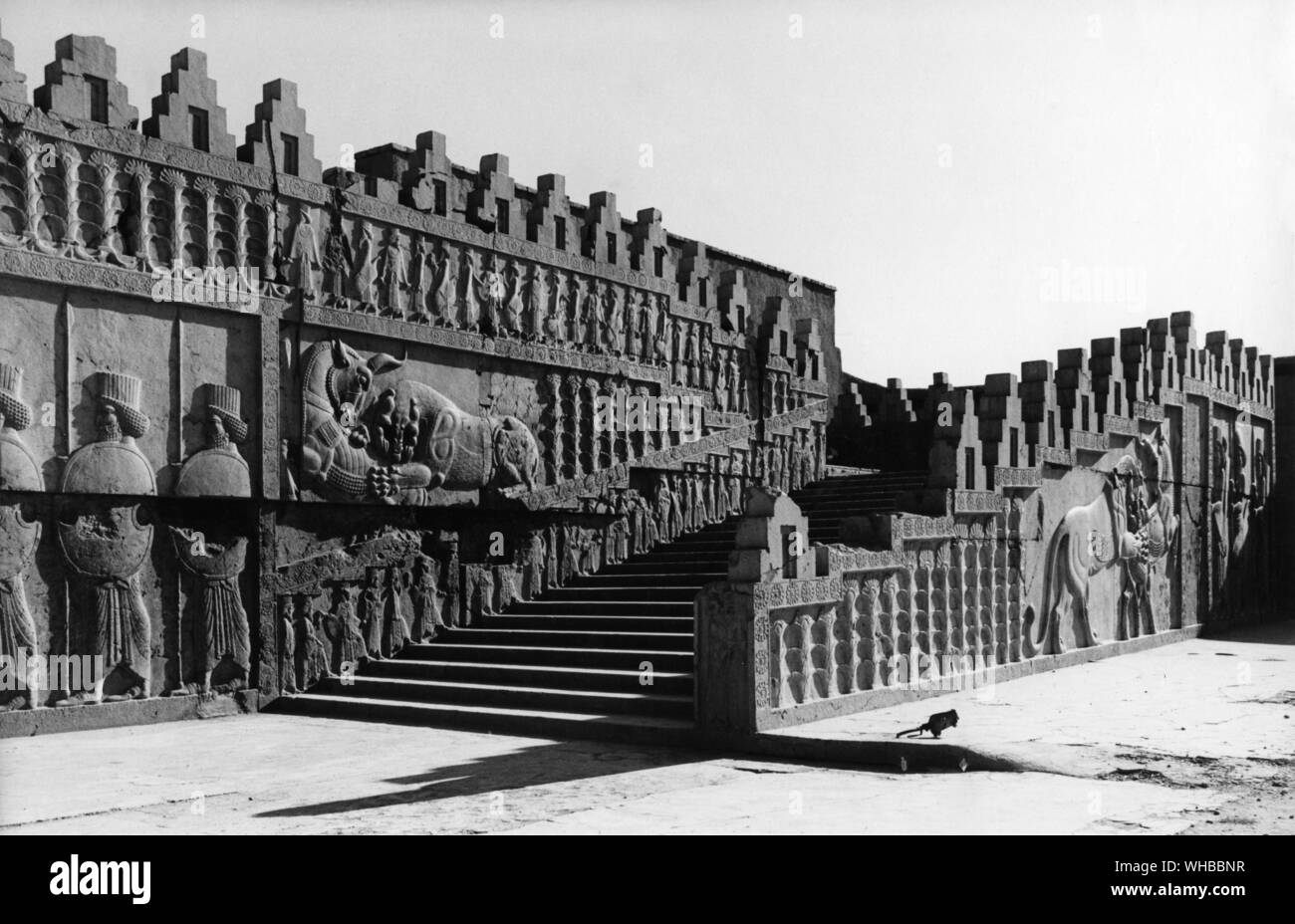 Apadana Palace , Persepolis : Ancient city of Persia , capital of the Persian Empire , founded by Darius . Near to modern Shiraz , Iran . . The Walls were tiled and decorated with pictures of lions , bulls , and flowers Stock Photohttps://www.alamy.com/image-license-details/?v=1https://www.alamy.com/apadana-palace-persepolis-ancient-city-of-persia-capital-of-the-persian-empire-founded-by-darius-near-to-modern-shiraz-iran-the-walls-were-tiled-and-decorated-with-pictures-of-lions-bulls-and-flowers-image268855379.html
Apadana Palace , Persepolis : Ancient city of Persia , capital of the Persian Empire , founded by Darius . Near to modern Shiraz , Iran . . The Walls were tiled and decorated with pictures of lions , bulls , and flowers Stock Photohttps://www.alamy.com/image-license-details/?v=1https://www.alamy.com/apadana-palace-persepolis-ancient-city-of-persia-capital-of-the-persian-empire-founded-by-darius-near-to-modern-shiraz-iran-the-walls-were-tiled-and-decorated-with-pictures-of-lions-bulls-and-flowers-image268855379.htmlRMWHBBNR–Apadana Palace , Persepolis : Ancient city of Persia , capital of the Persian Empire , founded by Darius . Near to modern Shiraz , Iran . . The Walls were tiled and decorated with pictures of lions , bulls , and flowers
 Relief of Persian and Median soldiers (the Medes are the ones with rounded caps) in Persepolis, capital of the Achaemenid Empire (550–330 BC), Iran. Stock Photohttps://www.alamy.com/image-license-details/?v=1https://www.alamy.com/relief-of-persian-and-median-soldiers-the-medes-are-the-ones-with-rounded-caps-in-persepolis-capital-of-the-achaemenid-empire-550330-bc-iran-image594242536.html
Relief of Persian and Median soldiers (the Medes are the ones with rounded caps) in Persepolis, capital of the Achaemenid Empire (550–330 BC), Iran. Stock Photohttps://www.alamy.com/image-license-details/?v=1https://www.alamy.com/relief-of-persian-and-median-soldiers-the-medes-are-the-ones-with-rounded-caps-in-persepolis-capital-of-the-achaemenid-empire-550330-bc-iran-image594242536.htmlRM2WEP2BM–Relief of Persian and Median soldiers (the Medes are the ones with rounded caps) in Persepolis, capital of the Achaemenid Empire (550–330 BC), Iran.
 Wachsmut Von Kunzingen, unknown poet and crusader, with the standard and the dress of assault before a fight. Codex Manesse (ca.1300) by Rudiger Manesse and his son Johannes. Fol.160v. University of Heidelberg. Library. Germany. Stock Photohttps://www.alamy.com/image-license-details/?v=1https://www.alamy.com/wachsmut-von-kunzingen-unknown-poet-and-crusader-with-the-standard-and-the-dress-of-assault-before-a-fight-codex-manesse-ca1300-by-rudiger-manesse-and-his-son-johannes-fol160v-university-of-heidelberg-library-germany-image209608856.html
Wachsmut Von Kunzingen, unknown poet and crusader, with the standard and the dress of assault before a fight. Codex Manesse (ca.1300) by Rudiger Manesse and his son Johannes. Fol.160v. University of Heidelberg. Library. Germany. Stock Photohttps://www.alamy.com/image-license-details/?v=1https://www.alamy.com/wachsmut-von-kunzingen-unknown-poet-and-crusader-with-the-standard-and-the-dress-of-assault-before-a-fight-codex-manesse-ca1300-by-rudiger-manesse-and-his-son-johannes-fol160v-university-of-heidelberg-library-germany-image209608856.htmlRMP50E6G–Wachsmut Von Kunzingen, unknown poet and crusader, with the standard and the dress of assault before a fight. Codex Manesse (ca.1300) by Rudiger Manesse and his son Johannes. Fol.160v. University of Heidelberg. Library. Germany.
 Persepolis : Ancient city of Persia , capital of the Persian Empire, founded by Darius . Near to modern Shiraz , Iran Stock Photohttps://www.alamy.com/image-license-details/?v=1https://www.alamy.com/persepolis-ancient-city-of-persia-capital-of-the-persian-empire-founded-by-darius-near-to-modern-shiraz-iran-image268854996.html
Persepolis : Ancient city of Persia , capital of the Persian Empire, founded by Darius . Near to modern Shiraz , Iran Stock Photohttps://www.alamy.com/image-license-details/?v=1https://www.alamy.com/persepolis-ancient-city-of-persia-capital-of-the-persian-empire-founded-by-darius-near-to-modern-shiraz-iran-image268854996.htmlRMWHBB84–Persepolis : Ancient city of Persia , capital of the Persian Empire, founded by Darius . Near to modern Shiraz , Iran
 Relief of Persian and Median soldiers (the Mede wears rounded cap) in Persepolis, capital of the Achaemenid Empire (550–330 BC), Iran. Stock Photohttps://www.alamy.com/image-license-details/?v=1https://www.alamy.com/relief-of-persian-and-median-soldiers-the-mede-wears-rounded-cap-in-persepolis-capital-of-the-achaemenid-empire-550330-bc-iran-image594242547.html
Relief of Persian and Median soldiers (the Mede wears rounded cap) in Persepolis, capital of the Achaemenid Empire (550–330 BC), Iran. Stock Photohttps://www.alamy.com/image-license-details/?v=1https://www.alamy.com/relief-of-persian-and-median-soldiers-the-mede-wears-rounded-cap-in-persepolis-capital-of-the-achaemenid-empire-550330-bc-iran-image594242547.htmlRM2WEP2C3–Relief of Persian and Median soldiers (the Mede wears rounded cap) in Persepolis, capital of the Achaemenid Empire (550–330 BC), Iran.
 James I The Conqueror (1208-1276). Count of Barcelona and King of Aragon (1213-1276), Valencia (1239-1276) and Majorca (1229-1276). Expedition to Majorca. Nineteenth century colored engraving. Stock Photohttps://www.alamy.com/image-license-details/?v=1https://www.alamy.com/james-i-the-conqueror-1208-1276-count-of-barcelona-and-king-of-aragon-1213-1276-valencia-1239-1276-and-majorca-1229-1276-expedition-to-majorca-nineteenth-century-colored-engraving-image231209949.html
James I The Conqueror (1208-1276). Count of Barcelona and King of Aragon (1213-1276), Valencia (1239-1276) and Majorca (1229-1276). Expedition to Majorca. Nineteenth century colored engraving. Stock Photohttps://www.alamy.com/image-license-details/?v=1https://www.alamy.com/james-i-the-conqueror-1208-1276-count-of-barcelona-and-king-of-aragon-1213-1276-valencia-1239-1276-and-majorca-1229-1276-expedition-to-majorca-nineteenth-century-colored-engraving-image231209949.htmlRMRC4EJ5–James I The Conqueror (1208-1276). Count of Barcelona and King of Aragon (1213-1276), Valencia (1239-1276) and Majorca (1229-1276). Expedition to Majorca. Nineteenth century colored engraving.
 Apadana Palace , Persepolis : Persian relief in sculpture of officials carrying gifts , Iran Stock Photohttps://www.alamy.com/image-license-details/?v=1https://www.alamy.com/apadana-palace-persepolis-persian-relief-in-sculpture-of-officials-carrying-gifts-iran-image268855002.html
Apadana Palace , Persepolis : Persian relief in sculpture of officials carrying gifts , Iran Stock Photohttps://www.alamy.com/image-license-details/?v=1https://www.alamy.com/apadana-palace-persepolis-persian-relief-in-sculpture-of-officials-carrying-gifts-iran-image268855002.htmlRMWHBB8A–Apadana Palace , Persepolis : Persian relief in sculpture of officials carrying gifts , Iran
 Relief of Persian and Median soldiers (the Mede wears rounded cap) in Persepolis, capital of the Achaemenid Empire (550–330 BC), Iran. Stock Photohttps://www.alamy.com/image-license-details/?v=1https://www.alamy.com/relief-of-persian-and-median-soldiers-the-mede-wears-rounded-cap-in-persepolis-capital-of-the-achaemenid-empire-550330-bc-iran-image594242544.html
Relief of Persian and Median soldiers (the Mede wears rounded cap) in Persepolis, capital of the Achaemenid Empire (550–330 BC), Iran. Stock Photohttps://www.alamy.com/image-license-details/?v=1https://www.alamy.com/relief-of-persian-and-median-soldiers-the-mede-wears-rounded-cap-in-persepolis-capital-of-the-achaemenid-empire-550330-bc-iran-image594242544.htmlRM2WEP2C0–Relief of Persian and Median soldiers (the Mede wears rounded cap) in Persepolis, capital of the Achaemenid Empire (550–330 BC), Iran.